issue contents
January 2019 issue

Cover illustration: A new complex of the type fac-[MnX(CO)3(N^N)]+, in which the phenanthroline ligand (N^N) contains an NAD-mimic moiety (N-methylated nicotinamide) was synthesized by reacting bromidopentacarbonylmanganese(I) with 3-carbamoyl-1-(1,10-phenanthrolin-2-ylmethyl)pyridinium chloride. As a consequence, the compound exhibits substitutional disorder of Cl and Br at the two halogen sites in the asymmetric unit. Group 7 metal complexes of general formula [MX(CO)3(N^N)] (M = MnI, ReI; X = Br, Cl; N^N = 2,2'-bipyridine or 1,10-phenanthroline derivatives) have been studied extensively for their catalytic CO2 reduction abilities over recent decades. As the single-electron reduction of CO2 is highly unfavourable, the reduction of CO2 via proton-assisted multi-electron transfer is one of the best strategies and the introduction of phenolic functional groups into the bipyridyl supporting ligands, which can act as proton donors, has shown enhanced catalytic performance. Thus the authors focused on simulating the biological function of the coenzyme nicotinamide adenine dinucleotide (NAD), which can transfer a hydride ion reversibly. See: Wadayama, Takase & Oyama [IUCrData (2019). 4, x181792].
inorganic compounds


 access
access

 access
accessmetal-organic compounds


 access
access

 access
access

 access
access

 access
access

 access
access

 access
access

 access
access

 access
access

 access
access

 access
access

 access
accessorganic compounds


 access
access

 access
access

 access
access

 access
access

 access
access

 access
access

 access
access

 access
access

 access
access

 access
access

 access
access

 journal menu
journal menu













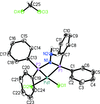
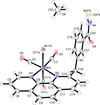
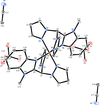
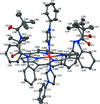






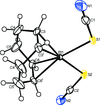











![[publCIF]](/logos/authorchecklist11.gif)





